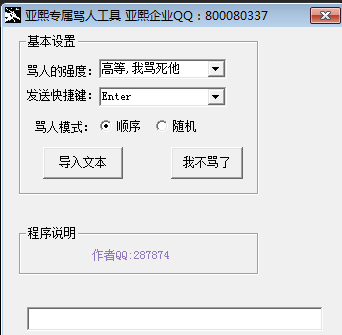golang的字体设置
时间:2023-05-10 13:04
Go语言是一门开源编程语言,由Google于2009年推出。它的主要特点是简单、快速和高效,这使得它成为了很多开发者的首选语言。在Go语言中,我们可以很方便地使用字体设置进行文本的渲染和显示。在这篇文章中,我们将介绍一些常用的golang字体设置方法。 一、加载字体 首先,我们需要加载字体文件,一般情况下,字体文件的文件名以“.ttf”或“.otf”结尾。在Go语言中,我们可以使用"github.com/golang/freetype/truetype"包中的truetype.Parse函数加载字体文件。它的用法如下: 上面的代码中,“path/to/font.ttf”是字体文件的路径。首先,我们打开字体文件,然后读取字体文件的内容,并使用truetype.Parse函数将字体文件解析成字体对象“font”。 二、设置字体大小 设置字体大小也非常简单。首先,我们需要定义一个freetype.Context对象。它包含了一个用于绘制文本的Canvas对象、字体对象和一些其他的设置。然后,我们通过设置freetype.Context的Font属性,将字体对象传递给Context对象。 下面是一个示例: 上面的代码中,我们使用image.NewGray函数创建了一个新的灰度图像,并通过freetype.NewContext函数创建了一个新的Context对象。然后,我们使用ctx.SetFont函数设置字体,该函数的参数是一个实现了image/font包中Font接口的对象。在这个例子中,我们使用了font.Face类型的字体对象。最后,我们使用ctx.DrawString函数绘制了一段文本。 三、设置字体样式 设置字体样式也非常简单。我们可以使用font.FaceOptions对象来设置字体的样式。下面是一个示例: 上面的代码中,我们定义了两个变量faceOptions和italicFaceOptions,它们用来设置字体样式。然后,我们调用truetyp.NewFace函数来创建boldFont和italicBoldFont字体变量。 通过这些方法,我们可以很方便地设置字体的大小、样式,让我们的程序更加具有创意和美感。 以上就是golang的字体设置的详细内容,更多请关注Gxl网其它相关文章!fontFile, err := os.Open("path/to/font.ttf")if err != nil { log.Fatal(err)}defer fontFile.Close()fontBytes, err := ioutil.ReadAll(fontFile)if err != nil { log.Fatal(err)}font, err := truetype.Parse(fontBytes)if err != nil { log.Fatal(err)}import ( "image" "image/color" "golang.org/x/image/font" "golang.org/x/image/font/gofont/goregular" "golang.org/x/image/font/gofont/gosmallcaps" "golang.org/x/image/math/fixed")func main() { bounds := image.Rect(0, 0, 1024, 768) img := image.NewGray(bounds) ctx := freetype.NewContext() ctx.SetDPI(72) ctx.SetFont(font.Font{}) ctx.SetFontSize(14) ctx.SetClip(img.Bounds()) ctx.SetDst(img) ctx.SetSrc(image.NewUniform(color.Black)) pt := freetype.Pt(50, 50) _, err := ctx.DrawString("Hello, world!", pt) if err != nil { log.Println(err) }}import ( "github.com/golang/freetype" "github.com/golang/freetype/truetype" "golang.org/x/image/font")func main() { fontFile, err := os.Open("path/to/font.ttf") if err != nil { log.Fatalf("failed to open font file: %v", err) } defer fontFile.Close() fontBytes, err := ioutil.ReadAll(fontFile) if err != nil { log.Fatalf("failed to read font file: %v", err) } font, err := truetype.Parse(fontBytes) if err != nil { log.Fatalf("failed to parse font: %v", err) } size := 24.0 ctx := freetype.NewContext() ctx.SetDPI(72) ctx.SetFont(font) var hinting font.Hinting ctx.SetHinting(hinting) faceOptions := truetype.Options{ Size: size, DPI: 72, Hinting: hinting, } boldFont := truetype.NewFace(font, &faceOptions) italicFaceOptions := faceOptions italicFaceOptions.FauxBold = true italicFaceOptions.FauxItalic = true italicFaceOptions.Size = size + 6 italicBoldFont := truetype.NewFace(font, &italicFaceOptions)}



























